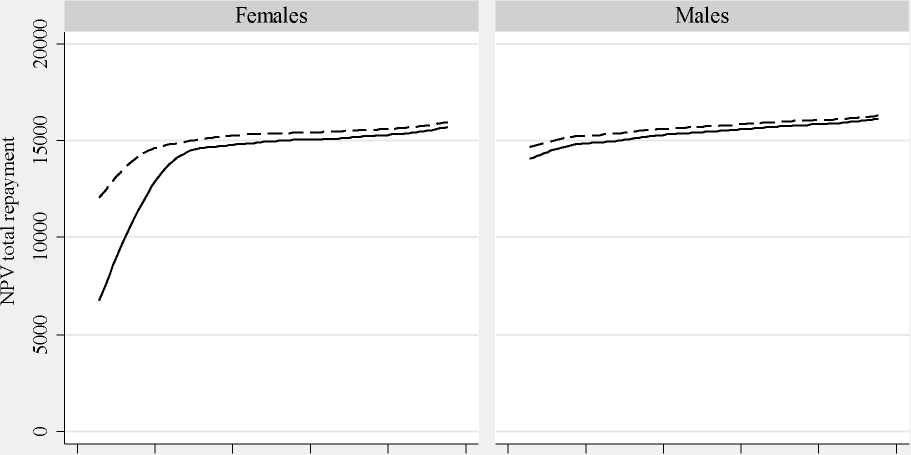NPV total repayment NPV total repayment

0 20 40 60 80 100 0 20 40 60 80 100
Percentile of the lifetime earnings distribution
---------- New system, £18,340 govt debt
-----Previous loan system, £18,340 govt debt
Next we present the pattern of graduate repayments under the new system compared
to the old system, taking into account that the level of debt on graduation will be
considerably higher under the new system compared to the old system, due to the
requirement to pay higher fees. As we set out in Table 3, the maximum total
maintenance loan after 3 years under the old system amounted to £12,350, compared
to the counterpart for these individuals under the new system of £18,340, for
maintenance and fees. Of course these extra payments are offset to varying degrees
by the reforms to the loan repayment system that we highlighted above. In Figure we
show the net effects of the increased government borrowing, but under more
favorable terms. The Figure shows that whilst most individuals will be required to pay
considerably more in debt repayments after graduation under the new system
compared to the old system, approximately the poorest tenth of women will actually
make smaller total debt repayments under the new system (saving up to around
£2,700 in total) despite graduating with considerably more debt: as we have already
seen this is largely due to the provision for debt write-off after 25 years.
20
More intriguing information
1. The name is absent2. A simple enquiry on heterogeneous lending rates and lending behaviour
3. The name is absent
4. Federal Tax-Transfer Policy and Intergovernmental Pre-Commitment
5. Sex differences in the structure and stability of children’s playground social networks and their overlap with friendship relations
6. The name is absent
7. The open method of co-ordination: Some remarks regarding old-age security within an enlarged European Union
8. Self-Help Groups and Income Generation in the Informal Settlements of Nairobi
9. Skill and work experience in the European knowledge economy
10. The name is absent